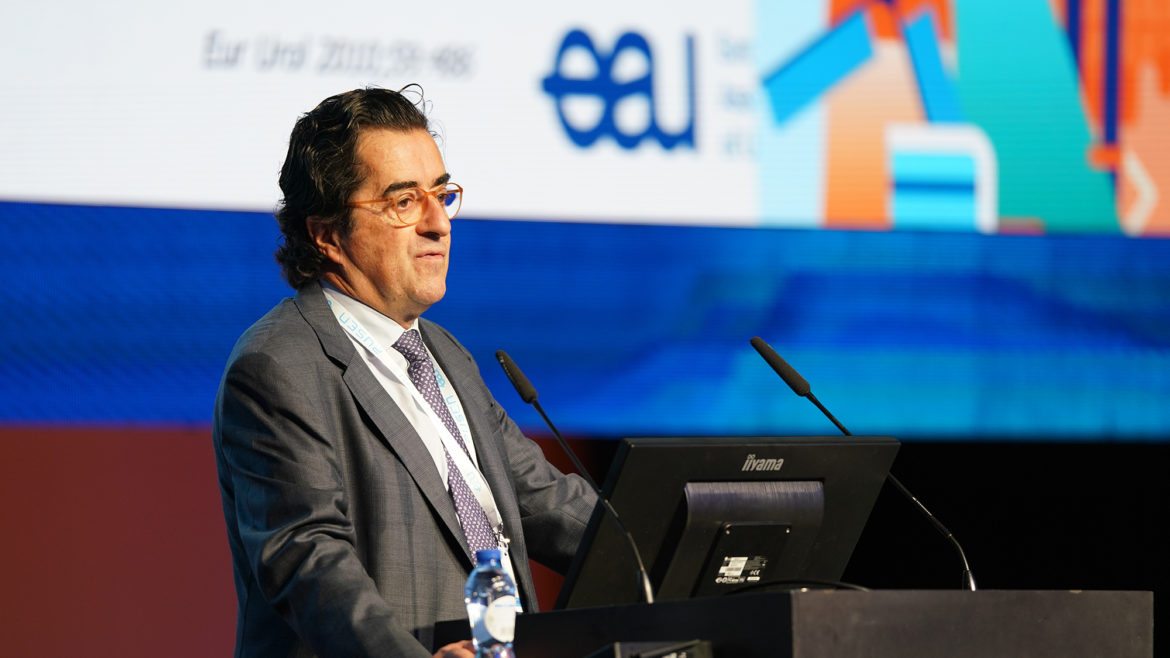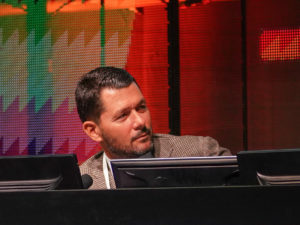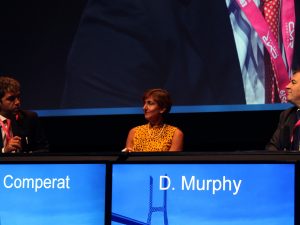ERUS22 is a meeting that is more focused on (live) surgery than ever before. In order to achieve this high concentration of live surgery over the course of the two and a half-day meeting, six surgical centres in Barcelona are broadcasting live procedures. Prof. Joan Palou is chairman of the Urology Department at the Fundació Puigvert, one of Europe’s most innovative and high-volume robotic centres and closely involved in the ERUS22 meeting.
“Our centre is a pioneer in robotic surgery,” says former ESU Chairman Prof. Palou. “We started in 2005 and we are happy to help organise this meeting and share our expertise.”
“As robotic technique has found its way to other centres in Barcelona, ERUS22 is a good opportunity to further expand our knowledge and share all of these hospitals’ own experiences with robotic experts and an audience from across the world.”
Diversity in procedures
The live surgery programme includes a great multitude of procedures, ranging from the more routine and standardised prostate and kidney procedures typically associated with robotic urology, to the newly emerging reconstructive and other indications. Prof. Palou will himself be performing a Robot-assisted Radical Prostatectomy and Robotic uretero-ileal stricture repair.
“Robotic surgery in urology started with prostate, and then kidney and bladder cancer surgery, but the indications have been expanding in recent years. At Fundació Puigvert we have introduced progressively other areas of urology that benefit from robotic surgery.”
“Radical prostatectomy is really the standard robotic surgery, but radical cystectomy is becoming more and more common, that it is useful as well. A recent paper published from the Swedish experience of robotic surgery versus open surgery, robotic surgery makes a positive difference.
“The robotic radical cystectomy in one of the most complicated surgeries in urology, since it implicates a long lasting procedure with different completely different steps (excision, reconstruction). It was one the first surgeries that we started, and it has evolved and improved since the beginning.”
But robotic urology is moving beyond organ-specific procedures, proving useful in new domains. Palou: “Complex partial nephrectomies are here to stay, and the robot shows a better feasibility than other techniques. We also started some years ago with retroperitoneal lymph node dissection after cytoreductive chemotherapy, in tumours up to 8cm. The recovery is excellent and with good oncological results.”
“Ureterointestinal stenosis surgery is highly demanding surgery, but robotic surgery also offers an excellent opportunity and its well-known advantages in this reconstructive surgery. The results have been successful with minimal complications. With other reconstructive surgeries such as fistula repairs, pieloplasties, ureteral reimplantation and more, robotic surgery offers a multitude of possibilities.”
Diversity in systems
ERUS22 will feature the first live demonstrations on the recently introduced Medtronic systems. The Fundació Puigvert is one of four centres in Europe to have started using these new systems, together with Aalst, Copenhagen and Rome (gynaecology). Only a few surgeons are currently working with the systems, but according to ERUS Chairman Dr. Breda (also at Puigvert), robotic surgeons should be familiar with all systems and not limited to or specialising in a single one.
Prof. Palou welcomes this diversification in manufacturers and systems: “I think is the natural history the development of different robots by the industry. As it happened with the extracorporeal shock wave lithotripsy with new models and prices in the market, new robots are appearing and it will be better for the global market, for the costs and mainly for the universalisation of the technique and improving the care of our patients.”
“The EAU has to be an independent association that shows all the possibilities and offers objective criteria and evaluation of the past, present and future developments in robotic urology.”
- The discounted late registration fee is available until 22 September so register now!





